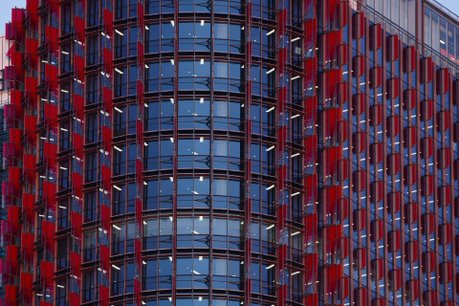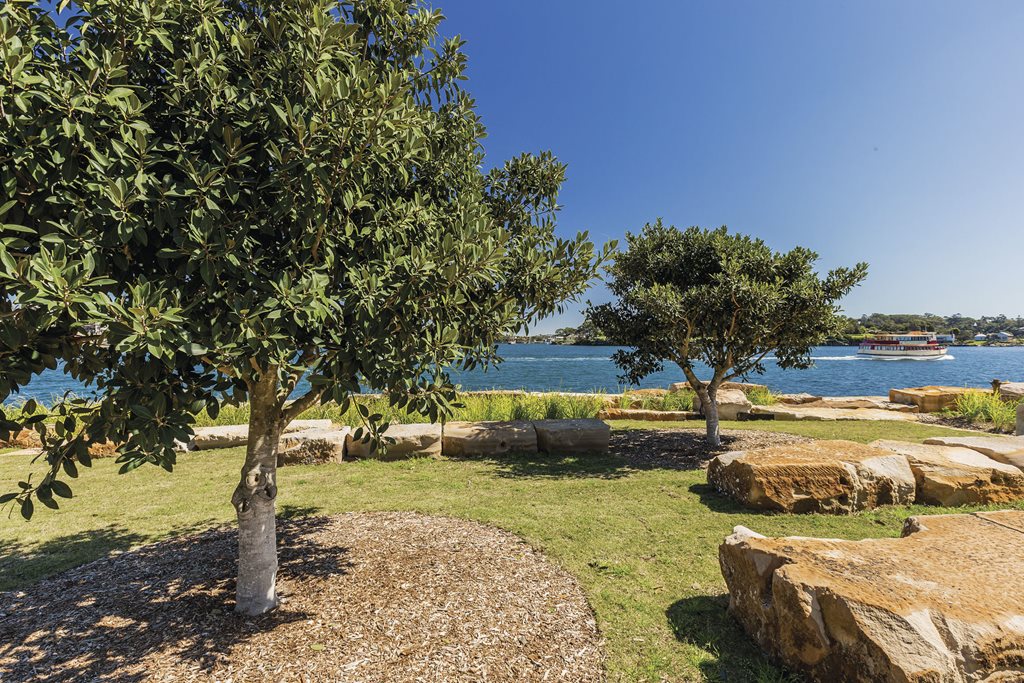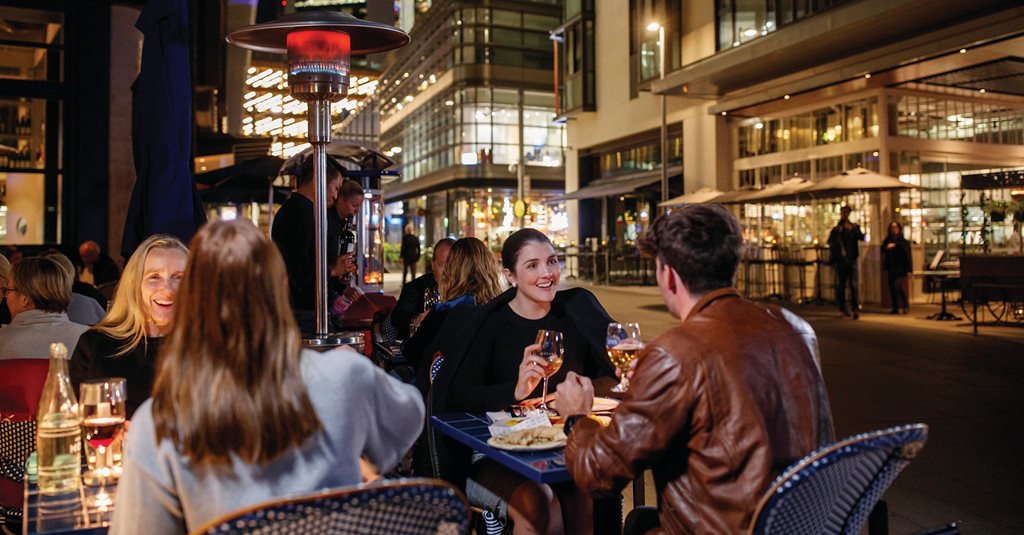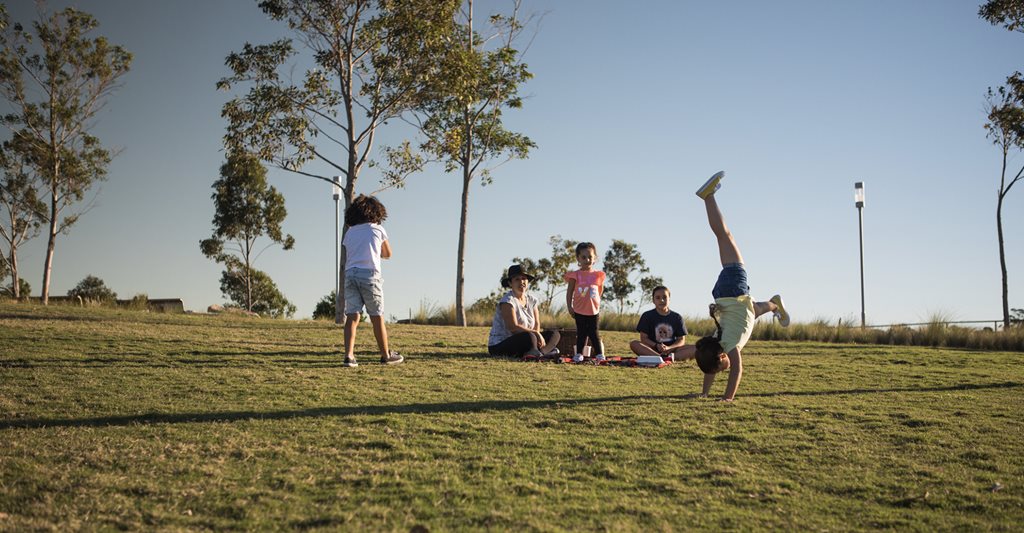Sustainability
Barangaroo is built to be sustainable today and for the future. Sustainability at Barangaroo is more than a commitment; it is a philosophy embedded into master planning, design, construction, and Barangaroo’s day-to-day management and activities. Barangaroo was Australia’s first mixed-use precinct certified as carbon neutral under the Climate Active initiative and has maintained this status for five consecutive years. Through a combination of benchmarking, policies and innovative technology, Barangaroo sets a new Australian standard in urban renewal and sustainable construction.
Benchmarking sustainability
From concept to day-to-day operations, sustainability is a commitment to:
- Reducing and offsetting all energy use.
- Having the capacity to recycle and export more water than the drinking water that is imported.
- Responsibly managing waste, diverting waste from landfill and ensuring zero waste emissions.
- Providing a place that enhances community wellbeing.
Each designer and developer involved in Barangaroo has committed to sustainable materials and practices that set up future building owners and tenants to meet sustainability benchmarks. This commitment ensures long-term sustainability is managed at both the government level and the individual building operator level.

Carbon neutrality
Benchmark 1: Reducing and offsetting all energy used on the site.
Carbon neutrality is ensured, with:
-
Electricity used on-site offset by renewable energy generated offsite. Barangaroo uses 100% renewable electricity, while Crown’s electricity is offset through 100% high-quality Australian Carbon Credit Units (ACCUs).
-
Fuel used on-site and for transport to and from Barangaroo offset with socially responsible carbon offset programs based in Australia.
-
On-site rooftop solar panels generate sufficient energy to power public areas and an on-site recycled water treatment plant.
-
Large-scale centralised infrastructure in service buildings, include a District Cooling Plant, embedded electricity network, recycled water treatment plant, and on-site renewable energy generation.
- Cost effective and energy efficient air conditioning through the District Cooling Plant, whereby water from Sydney Harbour helps to reject heat from buildings, passing through a series of screens, filters and strainers to protect and filter out marine life then pumping through electric chillers to absorb waste heat before being returned to the harbour.
Barangaroo is a proud climate active network member. For more information, please visit the climate active website.

Water positive
Benchmark 2: Recycling and exporting more water than the drinking water that is imported
As a ‘water wise’ precinct, Barangaroo uses:
-
A water treatment plant that treats wastewater and supplies non-drinking water for uses like toilet flushing and irrigation.
-
The ability to mine the adjacent public sewer for additional recycled water.
-
Harbour water is used for heat rejection from the district cooling plant, avoiding the use of drinking water to reject heat from the buildings, and removing the biggest single demand for water use in conventional commercial buildings.
-
A leading-edge water re-use system for Barangaroo Reserve that can capture, store, and re-uses rainwater for irrigation.
-
Water-efficient appliances in every building.

Zero waste emissions
Benchmark 3: Responsibly managing waste, diverting waste from landfill and ensuring zero waste emissions.
Waste is managed sustainably, with:
- More than 80% of operational waste from residential and commercial buildings diverted from landfill
- All tenants and building owners obliged to use waste management contractors that responsibly handle and dispose of waste and offset emissions
- Waste generated across all buildings sorted into 19 categories in the centralised waste storage centre.
- Maggot farms in the basement of Barangaroo process over 10 tonnes of food scraps each month, preventing the equivalent of over 20 tonnes in carbon emissions from being produced.

Community wellbeing
Benchmark 4: Providing a place that enhances community wellbeing.
Barangaroo is a place that supports people, with:
- More than 50% of the site dedicated public open space (this does not include roads, laneways and footpaths) .
- Connections to Sydney’s CBD through Barangaroo Ferry Wharf, Wynyard Walk and two pedestrian bridges over Hickson Road.
- Connections to the rest of Greater Sydney with a dedicated Barangaroo Metro Station, which opened in 2024.
- The new Wulugul Walk that forms part of the continuous urban waterfront walk from Woolloomooloo to the Anzac Bridge.
- Cultural tours that help people to understand Sydney’s First Nations and maritime history as well as contemporary First Nations culture.
- Skilled exchange programs, embedded in development agreements, that train and support people with on-site experience.
- The Discover Barangaroo online learning portal for high school students, with a focus on history, environmental sustainability, social sustainability and science, technology, engineering and mathematics (STEM).